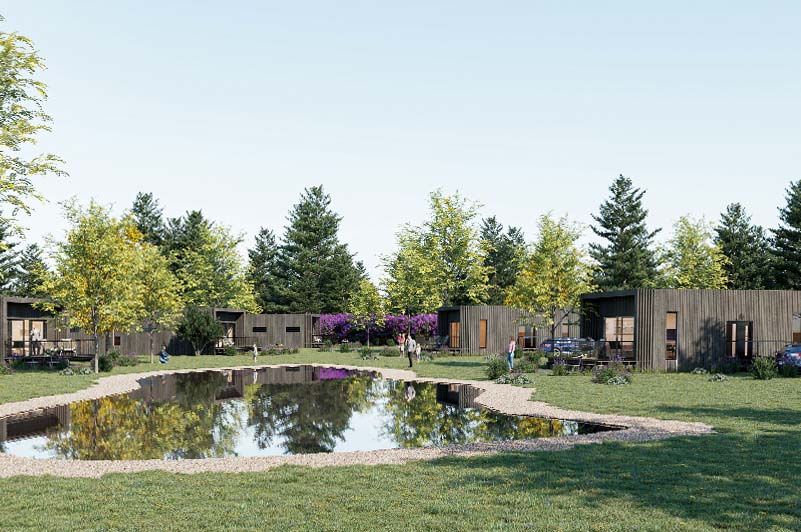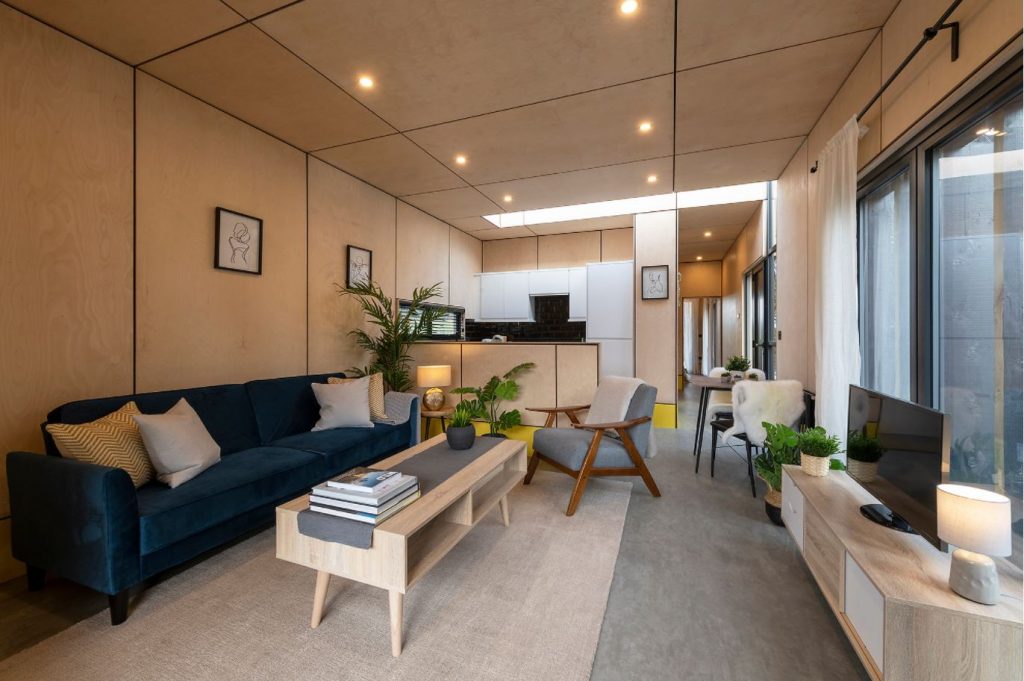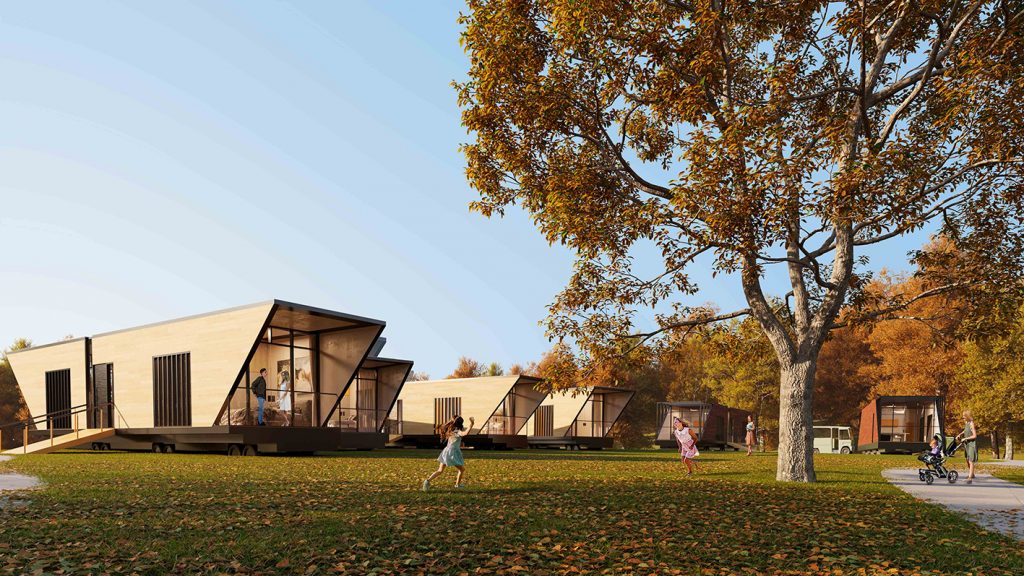
The 10 Steps to Getting Lodge Planning Permission
If you have some spare land and would love to start earning some extra income, then why not take a look into adding some luxury lodges.
At Studio Anyo, we are proud to design glamping lodges that break the mould when it comes to the architecture of this type of structure.
If you do want to start this kind of business and you’re looking to install some luxury lodges such as Torp, then you must make sure you have the required planning permission to do so.
But how can you do this?
Well, here is a guide to ten key steps you will have to pass through on the way.
Let’s take a look.
Step 1: Research Your Regulations
The first thing you need to do is make yourself familiar with the local planning regulations and zoning requirements.
Every different zone may be under a different jurisdiction, and this can mean that the rules alter between each location.
It’s always a good idea to get a good understanding of the jurisdiction you are thinking of installing your lodges on from an expert and assessing the issues that you may find along the way.
Step 2: Find Suitable Land
Once you have looked at the regulations in place and you think that you have everything you need to begin your glamping business, you need to pick the perfect plot of land.
You may have already had somewhere in mind, and if so that’s great, as long as it ticks the criteria needed to make your business a success and adhere to regulations.
For example, how close is your site to the amenities that will be needed such as toilets. Also, is there enough about the spot to attract people to your location. People love glamping in areas of natural beauty, so can yours provide that?
You must also make sure it is suitable in terms of environmental restraints and that it won’t cause any issues on this front.
Step 3: Create a Business Plan
Once you have your land, it is time to come up with a plan.
This takes everything into consideration not just for now, but in the future as well.
You must consider who your target market is and how you are going to bring people to the site. Another important aspect of this stage is how you think the business will perform financially, and how you think it may affect the local nature.
This will be important when you apply for planning permission as you will be able to showcase a well-thought out and profitable venture that should help prove the idea is viable.
Step 4: Discuss Your Proposal with Local Authorities
Now you have a solid business plan written out with all necessary documents attached, it is time to see what the local authorities think of your plan.
It is important that you hold this initial consultation as it can be valuable further down the line to hear of any sore points that you may be able to rectify before your final application goes in.
In this consultation, you can showcase your plans for now and the future, as well as highlighting why you think it will be good for the local community and environment and why it adheres to local regulations.
This is the perfect time to ask for guidance and hints that will be a huge help when preparing for your application, so take all feedback on board and make sure you’re making notes.
Step 5: Environmental Impact Assessment
One thing that you must be able to prove is that your glamping site won’t have negative effects on the environment in and around your site.
You may not have to do this if you are only adding a few lodges, but for someone looking to construct a site that is on a larger scale, you must be ready to prove you have done your research.
This could involve some factors such as waste management, how much water your site will use (and where it will come from), the ecological impact of your site and even things like noise and light pollution.
If there are any issues flagged in your environmental impact assessment, ways to resolve it will be proposed which can be key to your final application.

Step 6: Design and Map Out Your Site
Now it is time to plan your site.
This is when you work out how many lodges and pods you will have and where they will be located.
This will also be an important part of your planning permission application and it should always align with local regulations and any specific requirements that were mentioned by the planning department.
It is a good idea to work with an architect or design professional here as they will be able to advise on what kind of lodges to build, the best location for them, and also bring knowledge on many other aspects of planning that could help with your application.
Step 7: Prepare Your planning Application
You now have everything you need to get your application sent off, so it’s time to start preparing it.
This is when you must take a look back through all correspondence and make sure you have every document and certificate that is required and anything else that may help your cause in getting your application approved.
Some items that will be contained in here are your plans for the site and the business, as well as an environmental assessment if done.
When preparing your document, make sure that any issues that have been flagged are resolved and any questions are answered with plenty of information to back it up.
Step 8: Build Support Within the Community
An important factor when considering planning permission applications is the feeling of the local community towards the project.
Like the authorities, the locals will also have some concerns, such as how will it increase traffic through the location for instance.
It’s a good idea to host a consultation meeting and invite the local community along to showcase your plans and talk about how your project will be beneficial for the community, rather than a negative.
This is a great way to build local support and add another layer to your application.
Step 9: Submit Application
By now, you should have all bases covered, and the final step is to send off your application.
After sending it off to all relevant departments and completing any admin tasks associated with the project, your work is done.
It is vital you only send off your application once you’re sure you have resolved any issues, as the last thing you want is to send off an incomplete document.
Step 10: Follow the Process and Await the Decision
Now the process of assessment begins, and you may be required to carry out more consultations and assessments along the journey as questions are raised regarding the suitability of your site.
Always be co-operative and willing to help and any road bumps should be smoothed over nice and quickly and your application should keep running as it should.
At the end of it all, your application will either be approved or denied.
If approved, that’s great and you can then to work building your business.
If denied, you can appeal and create a new document which tries to change the local authorities mind.

Luxury Lodge Design with Studio Anyo
If you are a landowner looking to earn some extra income from your land, why not get in touch with Studio Anyo.
We are a team of experienced architects who specialise in luxury lodge development and planning, and have our own lodges such as Torp that are truly special.
We use MMC techniques to create sustainable and economical structure throughout our projects, so if you’re looking for a bespoke lodge for your glamping site, we would love to help.


